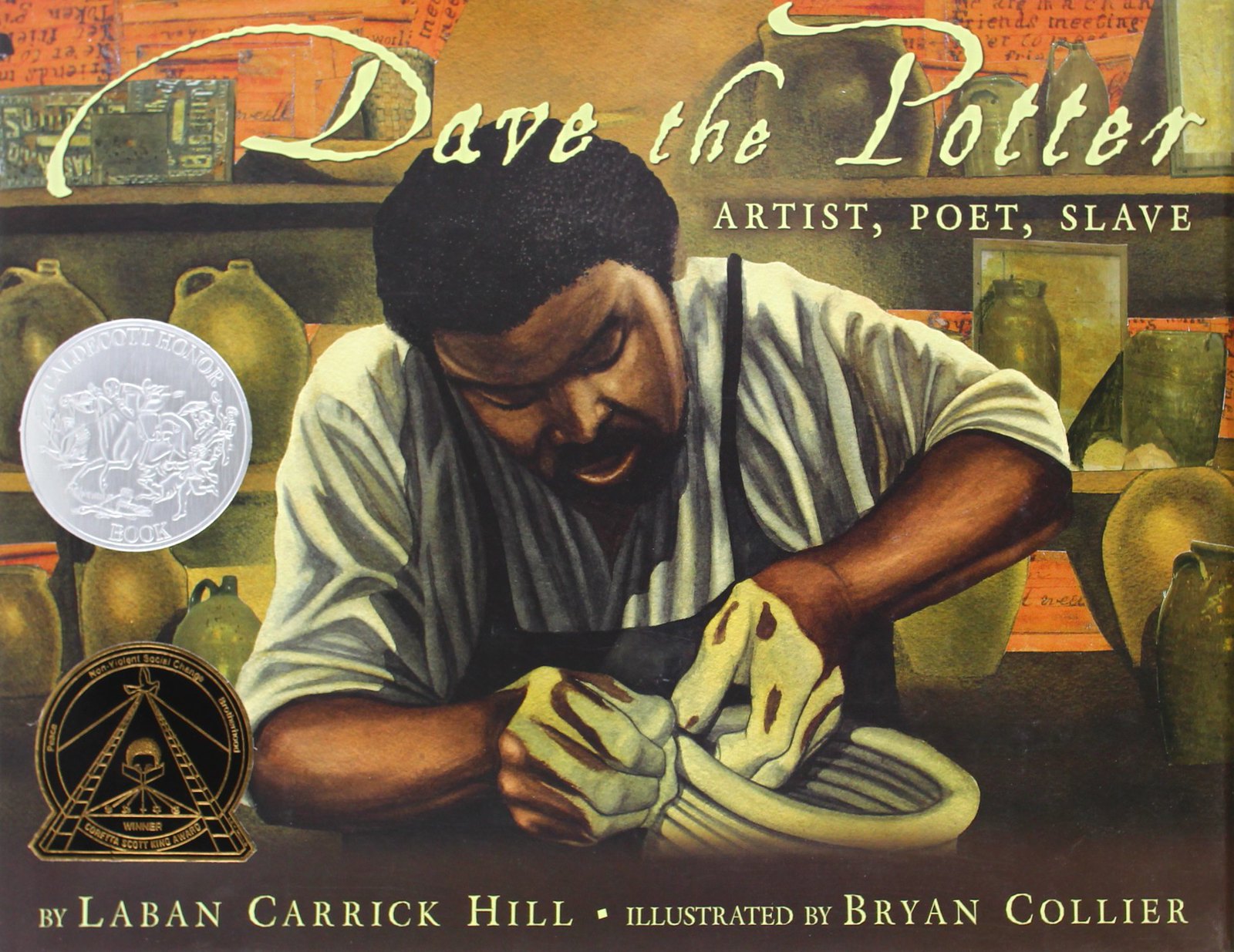 Black History Month is a time to commemorate the vast historical achievements and contributions of black Americans through time. For parents, it is also an opportunity to discuss and celebrate diversity with your children. One such way to do this is through books! Below, some book recommendations, and tips on how to read them with your child through a race-conscious lens.
Black History Month is a time to commemorate the vast historical achievements and contributions of black Americans through time. For parents, it is also an opportunity to discuss and celebrate diversity with your children. One such way to do this is through books! Below, some book recommendations, and tips on how to read them with your child through a race-conscious lens.  Through My Eyes, by Ruby BridgesIn November 1960, all of America watched as a tiny six-year-old black girl, surrounded by federal marshals, walked through a mob of screaming segregationists and into her school. An icon of the civil rights movement, Ruby Bridges chronicles each dramatic step of this pivotal event in history through her own words.
Through My Eyes, by Ruby BridgesIn November 1960, all of America watched as a tiny six-year-old black girl, surrounded by federal marshals, walked through a mob of screaming segregationists and into her school. An icon of the civil rights movement, Ruby Bridges chronicles each dramatic step of this pivotal event in history through her own words. Skin Again, by Bell Hooks and Chris RaschkaSkin Again puts skin color into a larger perspective by suggesting its refrain the limits of skin: “The skin I’m in is just a covering.” The text spends time discussing what skin color is as well as discussing what it is not. Skin color is not the definitive element of a person; while it can be an indicator of familial history and heritage, color cannot tell one's story in its entirety.
Skin Again, by Bell Hooks and Chris RaschkaSkin Again puts skin color into a larger perspective by suggesting its refrain the limits of skin: “The skin I’m in is just a covering.” The text spends time discussing what skin color is as well as discussing what it is not. Skin color is not the definitive element of a person; while it can be an indicator of familial history and heritage, color cannot tell one's story in its entirety. Dave the Potter: Artist, Poet, Slave, by Laban Carrick HillA Caldecott Honor and Corretta Scott King Award Winner, Dave the Potter tells the story of an extraordinary artist, poet, and potter living in South Carolina in the 1800s. He combined his superb artistry with deeply observant poetry, carved onto his pots, transcending the limitations he faced as a slave. In this inspiring and lyrical portrayal, National Book Award nominee Laban Carrick Hill's elegantly simple text and award-winning artist Bryan Collier's resplendent, earth-toned illustrations tell Dave's story, a story rich in history, hope, and long-lasting beauty.
Dave the Potter: Artist, Poet, Slave, by Laban Carrick HillA Caldecott Honor and Corretta Scott King Award Winner, Dave the Potter tells the story of an extraordinary artist, poet, and potter living in South Carolina in the 1800s. He combined his superb artistry with deeply observant poetry, carved onto his pots, transcending the limitations he faced as a slave. In this inspiring and lyrical portrayal, National Book Award nominee Laban Carrick Hill's elegantly simple text and award-winning artist Bryan Collier's resplendent, earth-toned illustrations tell Dave's story, a story rich in history, hope, and long-lasting beauty. Amazing Grace, by Mary HoffmanGrace loves stories, and with a boundless imagination she acts them all out. One day, her teacher asks who would like to play the lead in the play Peter Pan. Grace eagerly raises her hand, but Raj tells her she isn't a boy, and Natalie tells her she can't because she is black. Nana sets Grace straight: she can do anything she sets her mind to! Grace's talent bursts forth, and she wins the audition hands down. Binch's radiant illustrations add to this inspiring story. (Amazon)
Amazing Grace, by Mary HoffmanGrace loves stories, and with a boundless imagination she acts them all out. One day, her teacher asks who would like to play the lead in the play Peter Pan. Grace eagerly raises her hand, but Raj tells her she isn't a boy, and Natalie tells her she can't because she is black. Nana sets Grace straight: she can do anything she sets her mind to! Grace's talent bursts forth, and she wins the audition hands down. Binch's radiant illustrations add to this inspiring story. (Amazon) Martin's Big Words: The Life of Dr. Martin Luther King, Jr., by Doreen RappaportThis picture-book biography is an excellent and accessible introduction for young readers to learn about one of the world's most influential leaders, Dr. Martin Luther King, Jr. Rappaport weaves the immortal words of Dr. King into a captivating narrative to tell the story of his life. With stunning art by acclaimed illustrator Bryan Collier, Martin's Big Words is an unforgettable portrait of a man whose dream changed America-and the world-forever. (Amazon)
Martin's Big Words: The Life of Dr. Martin Luther King, Jr., by Doreen RappaportThis picture-book biography is an excellent and accessible introduction for young readers to learn about one of the world's most influential leaders, Dr. Martin Luther King, Jr. Rappaport weaves the immortal words of Dr. King into a captivating narrative to tell the story of his life. With stunning art by acclaimed illustrator Bryan Collier, Martin's Big Words is an unforgettable portrait of a man whose dream changed America-and the world-forever. (Amazon) All the Colors We Are, by Katie KissingerWritten by social activist, educator, and founder of Threads of Justice, this bilingual (English/Spanish) book offers children a simple, scientifically accurate explanation of how our skin color is determined by our ancestors, the sun, and melanin. It’s also filled with colorful photographs that capture the beautiful variety of skin tones. This book helps children build positive identities as they accept, understand, and value our rich and diverse world. Unique activity ideas are included to help you extend the conversation with children.
All the Colors We Are, by Katie KissingerWritten by social activist, educator, and founder of Threads of Justice, this bilingual (English/Spanish) book offers children a simple, scientifically accurate explanation of how our skin color is determined by our ancestors, the sun, and melanin. It’s also filled with colorful photographs that capture the beautiful variety of skin tones. This book helps children build positive identities as they accept, understand, and value our rich and diverse world. Unique activity ideas are included to help you extend the conversation with children. Black is Brown is Tan, by Arnold AdoffBlack is brown is tan is a story/poem about being, a beautiful true song about a family delighting in each other and in the good things of the earth. This poetic story of an interracial family, narrated by the entire family.Recommended for Upper ElementaryOur Upper Elementary students have chosen multicultural voices for their February Book Club. Below, their selections.
Black is Brown is Tan, by Arnold AdoffBlack is brown is tan is a story/poem about being, a beautiful true song about a family delighting in each other and in the good things of the earth. This poetic story of an interracial family, narrated by the entire family.Recommended for Upper ElementaryOur Upper Elementary students have chosen multicultural voices for their February Book Club. Below, their selections. The Watsons go to Birmingham, by Christopher Paul CurtisThe Newbery and Coretta Scott King Honoree about the hilarious world of ten-year-old Kenny and his family, the Weird Watsons of Flint, Michigan. There's Momma, Dad, little sister Joetta, and brother Byron. When Byron gets to be too much trouble, they head South to Birmingham to visit Grandma, the one person who can shape him up. They are in Birmingham when tragic events take place. The events are a catalyst for increased activity in the Civil Rights Movement and work on voter registration in Mississippi, during Freedom Summer of 1964.
The Watsons go to Birmingham, by Christopher Paul CurtisThe Newbery and Coretta Scott King Honoree about the hilarious world of ten-year-old Kenny and his family, the Weird Watsons of Flint, Michigan. There's Momma, Dad, little sister Joetta, and brother Byron. When Byron gets to be too much trouble, they head South to Birmingham to visit Grandma, the one person who can shape him up. They are in Birmingham when tragic events take place. The events are a catalyst for increased activity in the Civil Rights Movement and work on voter registration in Mississippi, during Freedom Summer of 1964. Amina’s Voice, by Hena KhanA Pakistani-American Muslim girl struggles to stay true to her family’s vibrant culture while simultaneously blending in at school after tragedy strikes her community in this sweet and moving middle grade novel from the award-winning author of It’s Ramadan, Curious George. A disturbing hate crime targets the Islamic Center and mosque, but the surrounding community rises to help and support their Muslim neighbors.
Amina’s Voice, by Hena KhanA Pakistani-American Muslim girl struggles to stay true to her family’s vibrant culture while simultaneously blending in at school after tragedy strikes her community in this sweet and moving middle grade novel from the award-winning author of It’s Ramadan, Curious George. A disturbing hate crime targets the Islamic Center and mosque, but the surrounding community rises to help and support their Muslim neighbors. Sugar, by Jewell Parker RhodesTen-year-old Sugar lives on the River Road sugar plantation along the banks of the Mississippi. Slavery is over, but laboring in the fields all day doesn't make her feel very free. Thankfully, Sugar has a knack for finding her own fun, especially when she joins forces with forbidden friend Billy, the white plantation owner's son. Sugar has always yearned to learn more about the world, and she sees her chance when Chinese workers are brought in to help harvest the cane. Here is a story of unlikely friendships and how they can change our lives forever.See a much more extensive list of recommended books for children relating to Black History Month here. And be sure to check out Scott Woods' updated list of 28 More Black Picture Books That Aren't About Boycotts, Buses or Basketball (2018). Tips on Engaging Children in the Story
Sugar, by Jewell Parker RhodesTen-year-old Sugar lives on the River Road sugar plantation along the banks of the Mississippi. Slavery is over, but laboring in the fields all day doesn't make her feel very free. Thankfully, Sugar has a knack for finding her own fun, especially when she joins forces with forbidden friend Billy, the white plantation owner's son. Sugar has always yearned to learn more about the world, and she sees her chance when Chinese workers are brought in to help harvest the cane. Here is a story of unlikely friendships and how they can change our lives forever.See a much more extensive list of recommended books for children relating to Black History Month here. And be sure to check out Scott Woods' updated list of 28 More Black Picture Books That Aren't About Boycotts, Buses or Basketball (2018). Tips on Engaging Children in the Story
- Shift from a "performance" mindset to a "discussion" mindsetWhen reading with a child, avoid creating a space in which your child feels that he must sit and passively listen to the story from start to finish. Instead, create a space for discussion. Ask questions throughout the book that will draw a child into a critical thinking mindset, such as asking open-ended questions: "What do you see happening in this picture?" "What do you see that makes you say that?" and "What else can we find?"
- Embrace race during story timeIt's okay to point out racial differences depicted in story books! Embrace differences and point out and reinforce "fair/unfair" scenarios when discussing racial stereotypes or exclusion. Though many white parents may have been socialized to believe that talking about race is impolite, avoiding talking about race with white children can lead white children to take away a negative message, and to feel uncomfortable with topics of race.
- Ask questions to get kids talking about how words and pictures can reflect, reinforce, or challenge systems of powerAsk: "Whose story is this?" "Who is named? Who isn't?" "Who acts? Who is acted upon?" Any of these questions can lead to discussions about power dynamics and how race is represented in each story/book.
- Keep in mind that children's books are a form of socialization; they are at once reflecting culture and building it (from EmbraceRace.org)With this in mind, take a look at your child's home library. Does it include positive, good books that also happen to diverse? This is important! Work to diversify your child's book collection, as it is extremely important for your child to grow up reading books that feature a racially diverse set of characters, not just during Black History Month, but all the time.
Parents can also stop by any library: the St. Louis County Library system or the Kirkwood Public Library to check out We Stories curricular books as well as fun, educational discussion kits. There, you can find guides that help parents feel comfortable discussing race with their children.“Do we believe and constantly insist that cooperation among the peoples of the world is necessary in order to bring about peace? If so, what is needed first of all is collaboration with children.... All our efforts will come to nothing until we remedy the great injustice done the child, and remedy it by cooperating with him. If we are among the men of good will who yearn for peace, we must lay the foundation for peace ourselves, by working for the social world of the child.” (International Montessori Congress, 1937)
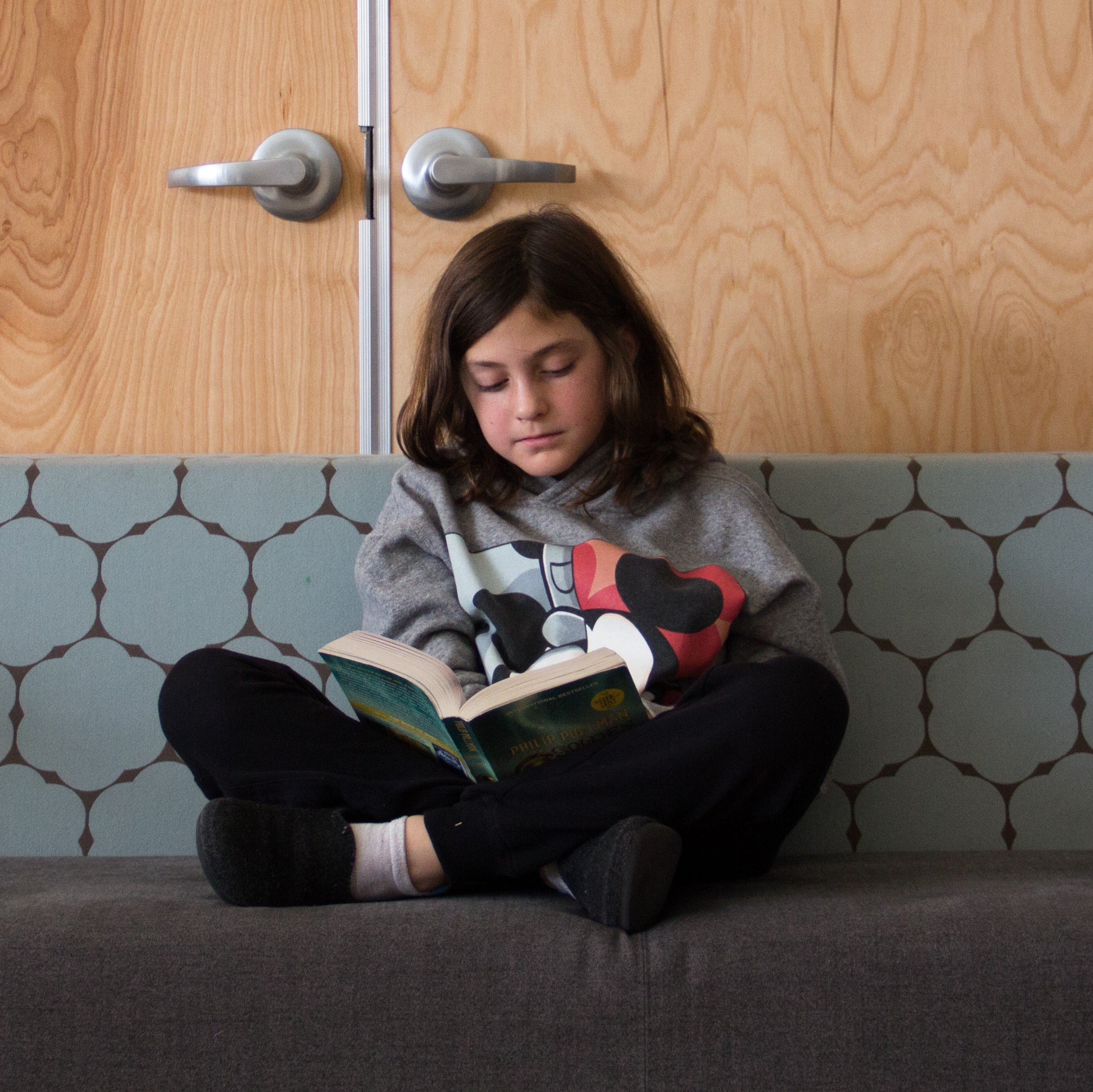 The Upper Elementary Book Club takes monthly deep-dives into curated selections of books in a range of genres. Our on- and off-campus UE students work to complete the books by a deadline, along with complementary work to help them organize their thoughts and plan for discussion. Then they gather online each Friday to discuss the themes, settings, characters, plot lines and literary devices of their chosen books.For October, UE readers have chosen from three middle-grade novels centered around characters with physical/mobility disabilities, each written in an engaging first-person narrative.
The Upper Elementary Book Club takes monthly deep-dives into curated selections of books in a range of genres. Our on- and off-campus UE students work to complete the books by a deadline, along with complementary work to help them organize their thoughts and plan for discussion. Then they gather online each Friday to discuss the themes, settings, characters, plot lines and literary devices of their chosen books.For October, UE readers have chosen from three middle-grade novels centered around characters with physical/mobility disabilities, each written in an engaging first-person narrative.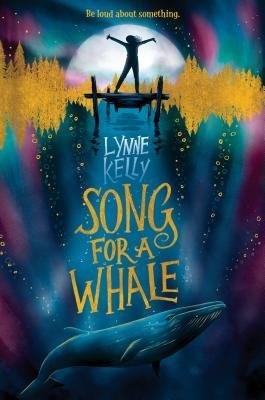 Song for a Whale by Lynne Kelly tells the story of 12-year-old Iris, a deaf girl compelled to find and help Blue 55, a whale who is forced to live in isolation because he is unable to communicate with his pod. Iris is surrounded by people who misunderstand and underestimate her because she is deaf, and when she learns about Blue 55, she pours her heart and soul into helping him. A genius with electronics and technology, Iris decides to invent a way to help Blue 55 sing so he can communicate with other whales and find a pod. To accomplish her goal, she has to take a lot of risks and break a lot of rules. She has to venture out into the world alone. Song for a Whale is the adventurous, suspenseful and inspiring story of two misfits finding a connection.
Song for a Whale by Lynne Kelly tells the story of 12-year-old Iris, a deaf girl compelled to find and help Blue 55, a whale who is forced to live in isolation because he is unable to communicate with his pod. Iris is surrounded by people who misunderstand and underestimate her because she is deaf, and when she learns about Blue 55, she pours her heart and soul into helping him. A genius with electronics and technology, Iris decides to invent a way to help Blue 55 sing so he can communicate with other whales and find a pod. To accomplish her goal, she has to take a lot of risks and break a lot of rules. She has to venture out into the world alone. Song for a Whale is the adventurous, suspenseful and inspiring story of two misfits finding a connection. 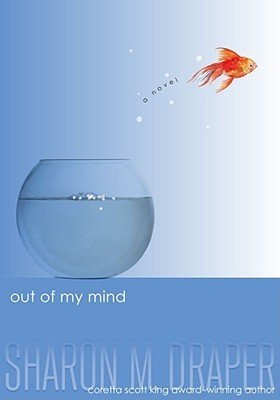 Out of My Mind by Sharon Draper tells the story of Melody, born with cerebral palsy, who cannot walk, talk or write. All of Melody's life, most people have been telling her she's incapable and not smart. One doctor even tells her parents she should be sent to a nursing home. But she knows she is smart, maybe smarter than anyone she knows... she's just trapped inside her head. By the time she's in fifth grade, Melody is determined to find a way to express her true self. With the help of a communication device, an integrating program at school, and a classroom aide, Melody begins to find her voice. Melody's path is not easy—she faces cruelty from her classmates and constant doubting from some of her teachers. But she keeps going, relying on her grit, her love of music and her sense of humor to ultimately express her true self.
Out of My Mind by Sharon Draper tells the story of Melody, born with cerebral palsy, who cannot walk, talk or write. All of Melody's life, most people have been telling her she's incapable and not smart. One doctor even tells her parents she should be sent to a nursing home. But she knows she is smart, maybe smarter than anyone she knows... she's just trapped inside her head. By the time she's in fifth grade, Melody is determined to find a way to express her true self. With the help of a communication device, an integrating program at school, and a classroom aide, Melody begins to find her voice. Melody's path is not easy—she faces cruelty from her classmates and constant doubting from some of her teachers. But she keeps going, relying on her grit, her love of music and her sense of humor to ultimately express her true self. 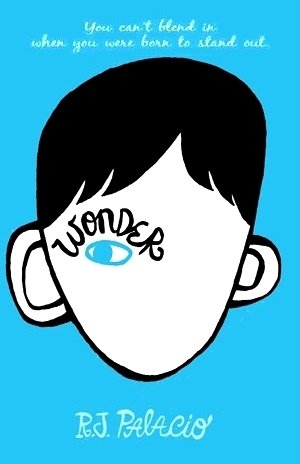 In Wonder by P.J. Palacio, we meet fifth grader Auggie, born with severe birth defects which left him with hearing loss and severe facial disfigurement. Auggie is never surprised by people's reactions when they see his face. He's used to it but he wishes he could just be seen as a normal kid. When his parents move him from homeschooling to a prep school, Auggie has to navigate the reactions of his new classmates and teachers. He is bullied, gawked at and betrayed by a new friend—all he wants is to quit school. Wonder is written in sections, told from different characters' points of view—Auggie's older sister, her friend and boyfriend, and two of Auggie's new friends. Through each of these character's stories, we learn more about Auggie and how hard life has been for him. And we also learn that there are people on his side, lifting him up. Auggie makes real friendships; with their support and the support of his family, he continues going to school and finds a place in the world.
In Wonder by P.J. Palacio, we meet fifth grader Auggie, born with severe birth defects which left him with hearing loss and severe facial disfigurement. Auggie is never surprised by people's reactions when they see his face. He's used to it but he wishes he could just be seen as a normal kid. When his parents move him from homeschooling to a prep school, Auggie has to navigate the reactions of his new classmates and teachers. He is bullied, gawked at and betrayed by a new friend—all he wants is to quit school. Wonder is written in sections, told from different characters' points of view—Auggie's older sister, her friend and boyfriend, and two of Auggie's new friends. Through each of these character's stories, we learn more about Auggie and how hard life has been for him. And we also learn that there are people on his side, lifting him up. Auggie makes real friendships; with their support and the support of his family, he continues going to school and finds a place in the world.
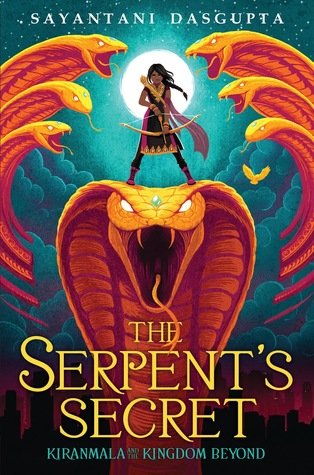 The Serpent's Secret is the first in the Kiranmala and the Kingdom Beyond series by Sayantani DasGupta. The series follows the adventures of 12-year-old Kiran, an Indian-American girl, whose parents have always told her crazy stories about magical worlds and creatures—they've even told her she's a princess! She has never believed them, but on the morning of her birthday, she wakes up to find her parents have vanished and a terrifying demon is after her. Kiran suddenly finds herself in another dimension, where she is, in fact, a heroic princess on a mission to rescue her parents and save New Jersey. DasGupta weaves characters and tales inspired by traditional Bengali folklore into this wildly adventurous story.
The Serpent's Secret is the first in the Kiranmala and the Kingdom Beyond series by Sayantani DasGupta. The series follows the adventures of 12-year-old Kiran, an Indian-American girl, whose parents have always told her crazy stories about magical worlds and creatures—they've even told her she's a princess! She has never believed them, but on the morning of her birthday, she wakes up to find her parents have vanished and a terrifying demon is after her. Kiran suddenly finds herself in another dimension, where she is, in fact, a heroic princess on a mission to rescue her parents and save New Jersey. DasGupta weaves characters and tales inspired by traditional Bengali folklore into this wildly adventurous story.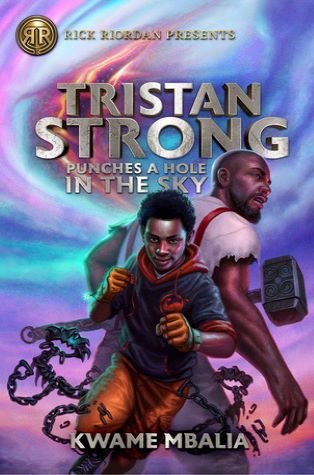 Tristan Strong Punches a Hole in the Sky is the first in a series by Kwame Mbalia that follows the life and heroic adventures of seventh-grader Tristan Strong. After his best friend, Eddie, dies in a bus accident, Tristan is sent to stay with his grandparents to help him cope with his grief. On his first night there, the only thing Tristan has left of Eddie, his journal of folk tales, is stolen by a doll-looking creature. Tristan chases the creature into the mysterious woods and finally catches it. He struggles to get the journal back, accidentally punches a tree, and opens a passageway to another world. In this new dimension, Tristan meets John Henry and other characters from African-American folklore, as well as several West African deities. Tristan joins forces with the inhabitants of this magical place to seal the hole between the two dimensions and save the world.
Tristan Strong Punches a Hole in the Sky is the first in a series by Kwame Mbalia that follows the life and heroic adventures of seventh-grader Tristan Strong. After his best friend, Eddie, dies in a bus accident, Tristan is sent to stay with his grandparents to help him cope with his grief. On his first night there, the only thing Tristan has left of Eddie, his journal of folk tales, is stolen by a doll-looking creature. Tristan chases the creature into the mysterious woods and finally catches it. He struggles to get the journal back, accidentally punches a tree, and opens a passageway to another world. In this new dimension, Tristan meets John Henry and other characters from African-American folklore, as well as several West African deities. Tristan joins forces with the inhabitants of this magical place to seal the hole between the two dimensions and save the world.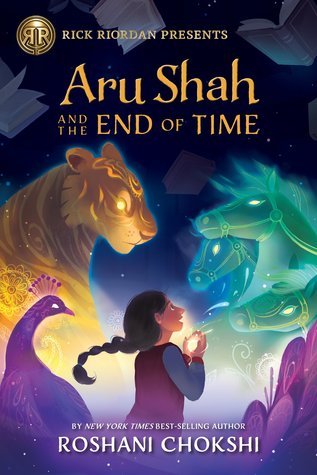 Aru Shah and the End of Time is the first book in the Pandava Series by Roshani Chokshi. Aru lives with her mother in the Museum of Ancient Indian Art and Culture. She lies to impress and fit in with the kids at school, whose lives seem much more exciting than her own. When three of her classmates come to the museum and dare Aru to light the Lamp of Bharata, to prove her claim that is cursed, she does it, believing she will be caught in her lie and humiliated. Instead the lamp releases a demon, and her classmates and mother become frozen in time. In order to stop the demon and restart time, Aru turns to the Hindu legend told in the Mahabarata. She sets out alone on a quest into the Kingdom of Death.
Aru Shah and the End of Time is the first book in the Pandava Series by Roshani Chokshi. Aru lives with her mother in the Museum of Ancient Indian Art and Culture. She lies to impress and fit in with the kids at school, whose lives seem much more exciting than her own. When three of her classmates come to the museum and dare Aru to light the Lamp of Bharata, to prove her claim that is cursed, she does it, believing she will be caught in her lie and humiliated. Instead the lamp releases a demon, and her classmates and mother become frozen in time. In order to stop the demon and restart time, Aru turns to the Hindu legend told in the Mahabarata. She sets out alone on a quest into the Kingdom of Death. 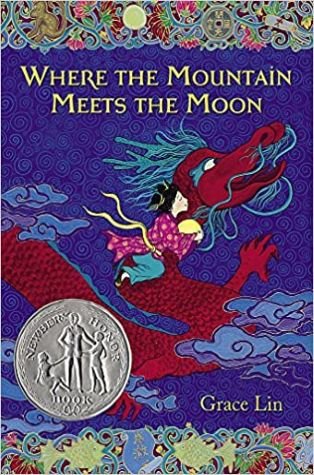 Where the Mountain Meets the Moon is the start of a four-book series by Grace Lin, based on traditional Chinese stories Lin heard as a child. Lin tells the story of Minli, a young girl who lives with her family in the valley of Fruitless Mountain. Her village and family are impoverished and unable to farm the land they live on. Minli, inspired by a magical goldfish and the folk tales her father tells her, sets out to change her family's fortune by finding the Old Man in the Moon. Early in her voyage, she meets Dragon, a flightless dragon, and they continue the adventure together. The book follows Minli and Dragon's heroic quest from village to village, as they solve riddles, face danger and meet wonderful characters along the way.
Where the Mountain Meets the Moon is the start of a four-book series by Grace Lin, based on traditional Chinese stories Lin heard as a child. Lin tells the story of Minli, a young girl who lives with her family in the valley of Fruitless Mountain. Her village and family are impoverished and unable to farm the land they live on. Minli, inspired by a magical goldfish and the folk tales her father tells her, sets out to change her family's fortune by finding the Old Man in the Moon. Early in her voyage, she meets Dragon, a flightless dragon, and they continue the adventure together. The book follows Minli and Dragon's heroic quest from village to village, as they solve riddles, face danger and meet wonderful characters along the way.
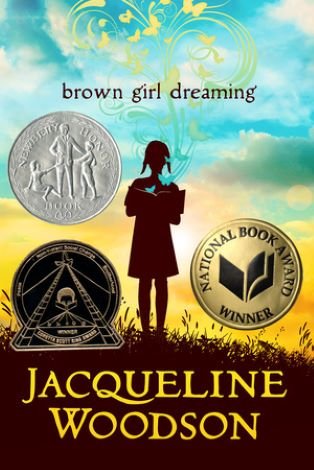 Brown Girl Dreaming is Jacqueline Woodson's beautifully written memoir. Through poems, Jacqueline tells the story of her childhood in the 1960s and 70s, moving back and forth between the Northeast and the South. Jackie's life is filled with her family's struggles—her parents' relationship falls apart, her baby brother is hospitalized, her uncle is sent to prison and her grandfather dies. But it is also filled with her family's strength—her grandparents' devotion to religion and peaceful civil rights activism. Brown Girl Dreaming weaves the stories of Jackie's family together with her own coming of age story, as she develops her own values, finds new friends and discovers her passion as a writer.
Brown Girl Dreaming is Jacqueline Woodson's beautifully written memoir. Through poems, Jacqueline tells the story of her childhood in the 1960s and 70s, moving back and forth between the Northeast and the South. Jackie's life is filled with her family's struggles—her parents' relationship falls apart, her baby brother is hospitalized, her uncle is sent to prison and her grandfather dies. But it is also filled with her family's strength—her grandparents' devotion to religion and peaceful civil rights activism. Brown Girl Dreaming weaves the stories of Jackie's family together with her own coming of age story, as she develops her own values, finds new friends and discovers her passion as a writer. 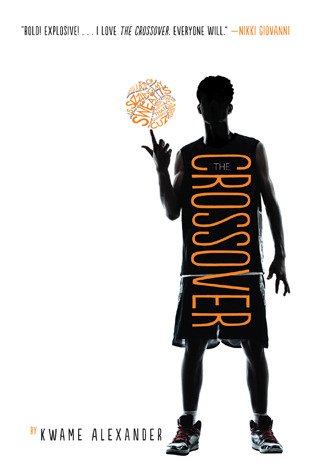 The Crossover by Kwame Alexander is told in vivid, rhythmic verse, in the voice of 12-year-old Josh Bell. Josh and his identical twin, JB, have basketball in their blood—their father, Chuck, is a former pro basketball player—and they share a true love of the game. Growing up, they play basketball every night with Chuck. But as they enter seventh grade, their interests begin to diverge. JB has a girlfriend and spends less and less time with Josh and Chuck. Josh is lonely, jealous and angry. The brothers have a terrible fight and their relationship seems permanently broken. At the same time, Chuck's health is failing. Although he is only 39, Chuck suffers a series of heart attacks and ultimately dies. Josh is devastated but also rediscovers his need for his brother, and the two find reconciliation.
The Crossover by Kwame Alexander is told in vivid, rhythmic verse, in the voice of 12-year-old Josh Bell. Josh and his identical twin, JB, have basketball in their blood—their father, Chuck, is a former pro basketball player—and they share a true love of the game. Growing up, they play basketball every night with Chuck. But as they enter seventh grade, their interests begin to diverge. JB has a girlfriend and spends less and less time with Josh and Chuck. Josh is lonely, jealous and angry. The brothers have a terrible fight and their relationship seems permanently broken. At the same time, Chuck's health is failing. Although he is only 39, Chuck suffers a series of heart attacks and ultimately dies. Josh is devastated but also rediscovers his need for his brother, and the two find reconciliation.  Some Places More Than Others by Renee Watson tells the story of 12-year-old Amara's trip with her father to visit his childhood home in Harlem and to make a family-history time capsule for school. She is excited to see the city, to explore the places of her father's childhood and to meet her grandfather and cousins for the first time in person. The trip is nothing like what Amara imagined—the city is crowded, loud and confusing, and the relationships in her family are strained. Amara begins to explore the sights in Harlem and to ask questions. She begins to learn more about her family's history and about the history of African-Americans in New York City. She discovers the ways she is connected to her family and to history, and she begins to help her family heal.
Some Places More Than Others by Renee Watson tells the story of 12-year-old Amara's trip with her father to visit his childhood home in Harlem and to make a family-history time capsule for school. She is excited to see the city, to explore the places of her father's childhood and to meet her grandfather and cousins for the first time in person. The trip is nothing like what Amara imagined—the city is crowded, loud and confusing, and the relationships in her family are strained. Amara begins to explore the sights in Harlem and to ask questions. She begins to learn more about her family's history and about the history of African-Americans in New York City. She discovers the ways she is connected to her family and to history, and she begins to help her family heal. 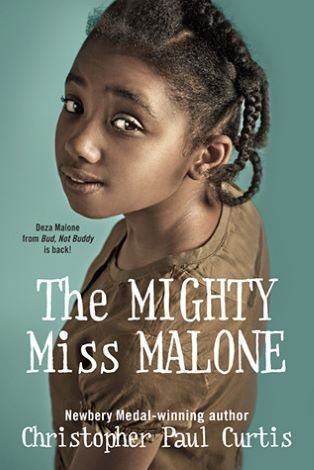 The Mighty Miss Malone by Christopher Paul Curtis is a historical novel set in Gary, Indiana during the Great Depression. It is the story of Deza Malone and her family. Deza is exceptionally smart, loves language and shines at her school in Gary, but her family cannot stay there because there is no work for her father. The family moves to Michigan to find work, and things begin to look up for a short while before everything gets worse—Deza's parents lose their jobs, they face health crises, they run out of food and clothing, they lose their home and face scathing racism. Throughout it all, Deza is also attending a new school, where she is discriminated against and told she is not as smart as she knows she is. Still, Deza—the mighty Miss Malone—and her family remain hopeful, and they continue to struggle, together, for "a place called Wonderful."
The Mighty Miss Malone by Christopher Paul Curtis is a historical novel set in Gary, Indiana during the Great Depression. It is the story of Deza Malone and her family. Deza is exceptionally smart, loves language and shines at her school in Gary, but her family cannot stay there because there is no work for her father. The family moves to Michigan to find work, and things begin to look up for a short while before everything gets worse—Deza's parents lose their jobs, they face health crises, they run out of food and clothing, they lose their home and face scathing racism. Throughout it all, Deza is also attending a new school, where she is discriminated against and told she is not as smart as she knows she is. Still, Deza—the mighty Miss Malone—and her family remain hopeful, and they continue to struggle, together, for "a place called Wonderful."
 A Mango-Shaped Space by Wendy Mass is a coming-of-age novel about 13-year-old Mia, a girl with synesthesia, an intermingling of the senses. Mia sees numbers, letters and sounds as colors and she's been keeping it a secret since she was teased about it in third grade. When her condition causes her to struggle in middle school, she tells her parents and they take her to a specialist. With a proper diagnosis, Mia is able to research synesthesia and connect with other people who have it. As she learns more about her condition, her life also begins to unfold in other ways. She loses her grandfather, is betrayed by her best friend, finds a new, unexpected friend in a classmate and her beloved cat, Mango, dies. In the end, Mia learns to turn to the people who support her and to accept herself.
A Mango-Shaped Space by Wendy Mass is a coming-of-age novel about 13-year-old Mia, a girl with synesthesia, an intermingling of the senses. Mia sees numbers, letters and sounds as colors and she's been keeping it a secret since she was teased about it in third grade. When her condition causes her to struggle in middle school, she tells her parents and they take her to a specialist. With a proper diagnosis, Mia is able to research synesthesia and connect with other people who have it. As she learns more about her condition, her life also begins to unfold in other ways. She loses her grandfather, is betrayed by her best friend, finds a new, unexpected friend in a classmate and her beloved cat, Mango, dies. In the end, Mia learns to turn to the people who support her and to accept herself. In Rain Reign by Ann M. Martin, we meet Rose, an 11-year-old girl with Asperger's Syndrome who finds comfort in homonyms and prime numbers. Rose lives with her father, who has little patience for her, and her dog, Rain (Reign). With the exception of Rain and sometimes her uncle, no one at school or home seems to understand Rose, or even to want to understand her. She finds comfort in Rain, who provides much-needed routine, as well as unconditional love. When Rain is lost in a hurricane and ultimately rescued by an animal shelter, Rose's life takes a turn. Her choices and the choices of her uncle and father change her life forever and, ultimately, lead to a fresh start for Rose.
In Rain Reign by Ann M. Martin, we meet Rose, an 11-year-old girl with Asperger's Syndrome who finds comfort in homonyms and prime numbers. Rose lives with her father, who has little patience for her, and her dog, Rain (Reign). With the exception of Rain and sometimes her uncle, no one at school or home seems to understand Rose, or even to want to understand her. She finds comfort in Rain, who provides much-needed routine, as well as unconditional love. When Rain is lost in a hurricane and ultimately rescued by an animal shelter, Rose's life takes a turn. Her choices and the choices of her uncle and father change her life forever and, ultimately, lead to a fresh start for Rose. Fish in a Tree by Lynda Mullaly Hunt tells the story of sixth-grader Ally, who is artistically and mathematically talented and who struggles with reading and writing. She has trouble in school, struggles socially and avoids reading and writing at all costs. While Ally's family loves her, they often have to relocate and are not equipped to support her learning difficulties. When Ally lands in a school with a teacher who senses she might have dyslexia, Ally's life changes. She thrives with her teacher's confidence in her, finds friends who face their own social challenges, learns to believe in herself and even inspires her older brother to face his own struggles with reading.
Fish in a Tree by Lynda Mullaly Hunt tells the story of sixth-grader Ally, who is artistically and mathematically talented and who struggles with reading and writing. She has trouble in school, struggles socially and avoids reading and writing at all costs. While Ally's family loves her, they often have to relocate and are not equipped to support her learning difficulties. When Ally lands in a school with a teacher who senses she might have dyslexia, Ally's life changes. She thrives with her teacher's confidence in her, finds friends who face their own social challenges, learns to believe in herself and even inspires her older brother to face his own struggles with reading. Mason Buttle is a kind, sincere and optimistic 12-year-old boy who is also bullied for being unusually large with a sweat-gland disorder, who has dyslexia and who has lost many of the most important people in his life, including his best friend, Benny, whose body was found in Mason's family's orchard. Mason grieves for his friend while also being suspected of having something to do with his death. Mason and his new friend Calvin are relentlessly, cruelly bullied but they stick together. Then, Calvin goes missing. Mason is again a suspect but, armed with honesty, he works to solve the mystery of Calvin's disappearance and Benny's death. The Truth as Told by Mason Buttle is, in the end, a story about the triumph of loyalty, sincerity and kindness.
Mason Buttle is a kind, sincere and optimistic 12-year-old boy who is also bullied for being unusually large with a sweat-gland disorder, who has dyslexia and who has lost many of the most important people in his life, including his best friend, Benny, whose body was found in Mason's family's orchard. Mason grieves for his friend while also being suspected of having something to do with his death. Mason and his new friend Calvin are relentlessly, cruelly bullied but they stick together. Then, Calvin goes missing. Mason is again a suspect but, armed with honesty, he works to solve the mystery of Calvin's disappearance and Benny's death. The Truth as Told by Mason Buttle is, in the end, a story about the triumph of loyalty, sincerity and kindness.

 Chickadee, written and illustrated by Louise Erdrich, is the fourth book in the Birchbark House series, which follows the stories of an Ojibwe family through a hundred years in the Northern Midwestern United States and Canada. In this book, we meet Chickadee and Makoons, eight-year-old identical twins whose lives are full of fun and happiness until Chickadee is stolen from his home and family to work as a servant for his white kidnappers. Chickadee escapes and he and his family face dangerous journeys across Minnesota to find each other. Chickadee is guided by the spirit of the bird that is his namesake—small and mischievous, powerful and brave. This is a beautiful story, full of adventure, sorrow, courage, tradition, joy and humor.
Chickadee, written and illustrated by Louise Erdrich, is the fourth book in the Birchbark House series, which follows the stories of an Ojibwe family through a hundred years in the Northern Midwestern United States and Canada. In this book, we meet Chickadee and Makoons, eight-year-old identical twins whose lives are full of fun and happiness until Chickadee is stolen from his home and family to work as a servant for his white kidnappers. Chickadee escapes and he and his family face dangerous journeys across Minnesota to find each other. Chickadee is guided by the spirit of the bird that is his namesake—small and mischievous, powerful and brave. This is a beautiful story, full of adventure, sorrow, courage, tradition, joy and humor.  Code Talker: A Novel About the Navajo Marines of World War Two by Joseph Bruchac. This is the story of 16-year-old Ned Begay, a fictional character who represents the Navajo men and boys who worked for the U.S. military in World War II, during a time when Navajo children were routinely taken from their homes and sent to boarding schools where they were made to unlearn their language and culture. Many Navajo boys were secretly recruited from these schools precisely for the language they were being trained to forget. They used their native language to communicate on behalf of the U.S. military during the Pacific Theater. Navajo, indecipherable by the Japanese, was the "code" that helped saved many lives in the war. How I Bec
Code Talker: A Novel About the Navajo Marines of World War Two by Joseph Bruchac. This is the story of 16-year-old Ned Begay, a fictional character who represents the Navajo men and boys who worked for the U.S. military in World War II, during a time when Navajo children were routinely taken from their homes and sent to boarding schools where they were made to unlearn their language and culture. Many Navajo boys were secretly recruited from these schools precisely for the language they were being trained to forget. They used their native language to communicate on behalf of the U.S. military during the Pacific Theater. Navajo, indecipherable by the Japanese, was the "code" that helped saved many lives in the war. How I Bec ame a Ghost by Tim Tingle is the story of ten-year-old Isaac, a Choctow boy whose family is forced by the U.S. military to leave their home in Mississippi on the Trail of Tears. Isaac, like so many others, dies on the harrowing journey to find a new home. The story is told from Isaac's point of view, after his death. As a ghost, Isaac finds community among other ghosts and living elders who are able to communicate with him. With their help—and the help of Joseph, the panther boy and Jumper, a Choctow-speaking dog—Isaac works to rescue Naomi, a Choctow girl who has been taken prisoner by white soldiers. How I Became a Ghost is inspiring, rich with tradition and full of suspense.
ame a Ghost by Tim Tingle is the story of ten-year-old Isaac, a Choctow boy whose family is forced by the U.S. military to leave their home in Mississippi on the Trail of Tears. Isaac, like so many others, dies on the harrowing journey to find a new home. The story is told from Isaac's point of view, after his death. As a ghost, Isaac finds community among other ghosts and living elders who are able to communicate with him. With their help—and the help of Joseph, the panther boy and Jumper, a Choctow-speaking dog—Isaac works to rescue Naomi, a Choctow girl who has been taken prisoner by white soldiers. How I Became a Ghost is inspiring, rich with tradition and full of suspense.  In the Footsteps of Crazy Horse by Joseph Marshall, III tells the story of an eleven-year-old Lakota boy, Jimmy McClean and his maternal grandfather, Nyles High Eagle. Jimmy is bullied on his reservation because he inherited his last name, as well as his light skin and blue eyes, from his white paternal grandfather. To help Jimmy find confidence, Nyles takes him on an adventure, following the footsteps of the great Lakota leader, Crazy Horse, who defended Lakota territories against the U.S. federal government. As they travel through South Dakota, Nyles tells Jimmy (and the reader) stories about the life of Crazy Horse and inspires Jimmy to find pride in himself and his true Lakota heritage. A Str
In the Footsteps of Crazy Horse by Joseph Marshall, III tells the story of an eleven-year-old Lakota boy, Jimmy McClean and his maternal grandfather, Nyles High Eagle. Jimmy is bullied on his reservation because he inherited his last name, as well as his light skin and blue eyes, from his white paternal grandfather. To help Jimmy find confidence, Nyles takes him on an adventure, following the footsteps of the great Lakota leader, Crazy Horse, who defended Lakota territories against the U.S. federal government. As they travel through South Dakota, Nyles tells Jimmy (and the reader) stories about the life of Crazy Horse and inspires Jimmy to find pride in himself and his true Lakota heritage. A Str anger at Home: A True Story, written by Christy Jordan-Fenton and Margaret Pokiak-Fenton and illustrated by Liz Amini-Holmes. This is the sequel to Pokiak-Fenton's first memoir, Fatty Legs. This book tells the true, heartbreaking story of ten-year-old Olemaun (Margaret) Pokiak's return to her Inuit family in the arctic after two years of living in a residential school in Canada, where she was forced to take a new name, practice a different religion and lose her native language. When she returns home, Margaret's family does not recognize her and Margaret discovers that she no longer knows how to live with them. She struggles to relearn everything and to find her sense of self and belonging. Recommended children's books by Native American authors:First Nations Development Institute's
anger at Home: A True Story, written by Christy Jordan-Fenton and Margaret Pokiak-Fenton and illustrated by Liz Amini-Holmes. This is the sequel to Pokiak-Fenton's first memoir, Fatty Legs. This book tells the true, heartbreaking story of ten-year-old Olemaun (Margaret) Pokiak's return to her Inuit family in the arctic after two years of living in a residential school in Canada, where she was forced to take a new name, practice a different religion and lose her native language. When she returns home, Margaret's family does not recognize her and Margaret discovers that she no longer knows how to live with them. She struggles to relearn everything and to find her sense of self and belonging. Recommended children's books by Native American authors:First Nations Development Institute's 
 One of my favorite things about Villa di Maria is our commitment to nurturing a culture of reading. Language lessons, reading corners, libraries and read-alouds are in every classroom. Children are welcome to read alone, in groups or to each other. For those who struggle to find ease with reading, our reading specialist,
One of my favorite things about Villa di Maria is our commitment to nurturing a culture of reading. Language lessons, reading corners, libraries and read-alouds are in every classroom. Children are welcome to read alone, in groups or to each other. For those who struggle to find ease with reading, our reading specialist, 

 And by the time our students reach Upper Elementary, they are introduced to a new way to revel in reading—the Book Club! Facilitated by Ms. Colleen, the Upper Elementary Book Club is a monthly deep-dive into curated selections of books in a range of genres. Students work at school and at home to complete the books by a deadline, along with complementary work, including story maps and reflective summaries, to help them organize their thoughts and plan for discussion. Then they gather to discuss themes, settings, characters, plot lines and literary devices (and share delicious snacks!).Empathy, diversity of perspective, language skills, time management, positive attitudes about reading, vocabulary, improved writing, new knowledge, reflection, critical thinking, self-evaluation… my ode to the benefits of the book club could go on and on. I'll sum it up with a quote from a fifth-year Upper Elementary student: "I think Book Club is important because other schools have it and because it is good to get used to due dates, homework and reading a lot of books. Also to expand your knowledge and English. I like reading the books. I think the papers are ok. And it helps you prepare for life."
And by the time our students reach Upper Elementary, they are introduced to a new way to revel in reading—the Book Club! Facilitated by Ms. Colleen, the Upper Elementary Book Club is a monthly deep-dive into curated selections of books in a range of genres. Students work at school and at home to complete the books by a deadline, along with complementary work, including story maps and reflective summaries, to help them organize their thoughts and plan for discussion. Then they gather to discuss themes, settings, characters, plot lines and literary devices (and share delicious snacks!).Empathy, diversity of perspective, language skills, time management, positive attitudes about reading, vocabulary, improved writing, new knowledge, reflection, critical thinking, self-evaluation… my ode to the benefits of the book club could go on and on. I'll sum it up with a quote from a fifth-year Upper Elementary student: "I think Book Club is important because other schools have it and because it is good to get used to due dates, homework and reading a lot of books. Also to expand your knowledge and English. I like reading the books. I think the papers are ok. And it helps you prepare for life."
 This month, UE students are reading books by Native American authors. The stories describe events in the history of North America from the perspectives of Native American children. We'll take a look at those books, as well as a few other resources for finding Native American voices, tomorrow. Stay tuned!
This month, UE students are reading books by Native American authors. The stories describe events in the history of North America from the perspectives of Native American children. We'll take a look at those books, as well as a few other resources for finding Native American voices, tomorrow. Stay tuned!  Happy Summer! When I dream of summer, I think of a less hectic lifestyle, enjoying a book under a tree, and sleeping in a bit later each day. If your family is similar to my family, we savor each day of summer break. I am a realist however and also understand that summer also leads to more distractions and screen time, quite a few arguments with my children, and I also worry about the “summer slide” in my children’s academic progress.Following are a few tips that help me as a parent as I attempt to combat academic loss in the area of literacy that can happen over the summer.1) Make reading enjoyable and part of your everyday routine. Days turn into weeks, and weeks turn into months. To not let time slip away, make reading something you do 15 minutes every day. 15 minutes of reading a day is a magical number according to the latest studies.2) LISTEN to books! Listening to literature is one of the TOP ways to increase overall literacy skills for ALL age levels. Increased reading levels, fluency, comprehension, visualization, and vocabulary ALL increase with listening to books. If you can’t fit in the 15 minutes of reading regularly, this is a super substitution. No, you don’t have to follow along with the book to reap the benefits. You can get audiobooks from the library, there are many online sources, and Audible.com has a few free titles. If audiobooks are new to you, give it a try! It takes at least 30 minutes of listening to get accustomed. Start with fun, short texts.
Happy Summer! When I dream of summer, I think of a less hectic lifestyle, enjoying a book under a tree, and sleeping in a bit later each day. If your family is similar to my family, we savor each day of summer break. I am a realist however and also understand that summer also leads to more distractions and screen time, quite a few arguments with my children, and I also worry about the “summer slide” in my children’s academic progress.Following are a few tips that help me as a parent as I attempt to combat academic loss in the area of literacy that can happen over the summer.1) Make reading enjoyable and part of your everyday routine. Days turn into weeks, and weeks turn into months. To not let time slip away, make reading something you do 15 minutes every day. 15 minutes of reading a day is a magical number according to the latest studies.2) LISTEN to books! Listening to literature is one of the TOP ways to increase overall literacy skills for ALL age levels. Increased reading levels, fluency, comprehension, visualization, and vocabulary ALL increase with listening to books. If you can’t fit in the 15 minutes of reading regularly, this is a super substitution. No, you don’t have to follow along with the book to reap the benefits. You can get audiobooks from the library, there are many online sources, and Audible.com has a few free titles. If audiobooks are new to you, give it a try! It takes at least 30 minutes of listening to get accustomed. Start with fun, short texts. • One of my favorites for toddlers is The Frogs Wore Red Suspenders by Jack Prelutsky.
• One of my favorites for toddlers is The Frogs Wore Red Suspenders by Jack Prelutsky. • For early elementary school children, My Father’s Dragon by Ruth Stiles Gannett was a home run for all three of my children. The Henry Huggins and Ramona Quimby series are also good places to start.
• For early elementary school children, My Father’s Dragon by Ruth Stiles Gannett was a home run for all three of my children. The Henry Huggins and Ramona Quimby series are also good places to start. • For upper elementary children, the lists are endless! Find a genre your child enjoys. Is there a series your child would like to read but the books are too long? This could be a great place to start.4) Keep the working memory active over the summer months. Reading requires A LOT of working memory skills. A reader must tie sight words, phonetic skills, language structure, and visualization together. Learning chess is one of the most trusted ways of improving the working memory! If you haven’t checked out the
• For upper elementary children, the lists are endless! Find a genre your child enjoys. Is there a series your child would like to read but the books are too long? This could be a great place to start.4) Keep the working memory active over the summer months. Reading requires A LOT of working memory skills. A reader must tie sight words, phonetic skills, language structure, and visualization together. Learning chess is one of the most trusted ways of improving the working memory! If you haven’t checked out the  Black is the Body is a magnificent collection of essays. Emily Bernard explores race, home, belonging, family, influence and so much more. The author is searching for revelation and gives it to the reader. Black is the Body is brilliant. Read it.
Black is the Body is a magnificent collection of essays. Emily Bernard explores race, home, belonging, family, influence and so much more. The author is searching for revelation and gives it to the reader. Black is the Body is brilliant. Read it. Just Mercy follows a lawyer's fight for justice and deftly exposes the shortcomings of our criminal justice system. Reading story after story, your heart will be broken open - making room for compassion and a desire for justice. Bryan Stevenson continues the struggle. He was in the
Just Mercy follows a lawyer's fight for justice and deftly exposes the shortcomings of our criminal justice system. Reading story after story, your heart will be broken open - making room for compassion and a desire for justice. Bryan Stevenson continues the struggle. He was in the  Citizen is a collection of poems in which Claudia Rankine tells stories both her own and belonging to her community. She gives a very real understanding of life as a person of color in the United States, exploring the realities of daily life as well as narratives in the media. Her work is powerful and profound. It's impossible to turn away from the truths in her work.
Citizen is a collection of poems in which Claudia Rankine tells stories both her own and belonging to her community. She gives a very real understanding of life as a person of color in the United States, exploring the realities of daily life as well as narratives in the media. Her work is powerful and profound. It's impossible to turn away from the truths in her work. In Baracoon Zora Neale Hurston introduces us to Cudjo Lewis, who tells his story of being transported to the United States from Africa as a slave. Hurston's interviews with Lewis give us a first-hand account of this horrific part of our history. The book is important in many ways, perhaps most profoundly in that it forces us to confront a very real piece of our history.These books are individually brilliant. But, if you can read them all, the truths each manifests are amplified by every other book. Read, read, read.
In Baracoon Zora Neale Hurston introduces us to Cudjo Lewis, who tells his story of being transported to the United States from Africa as a slave. Hurston's interviews with Lewis give us a first-hand account of this horrific part of our history. The book is important in many ways, perhaps most profoundly in that it forces us to confront a very real piece of our history.These books are individually brilliant. But, if you can read them all, the truths each manifests are amplified by every other book. Read, read, read. 

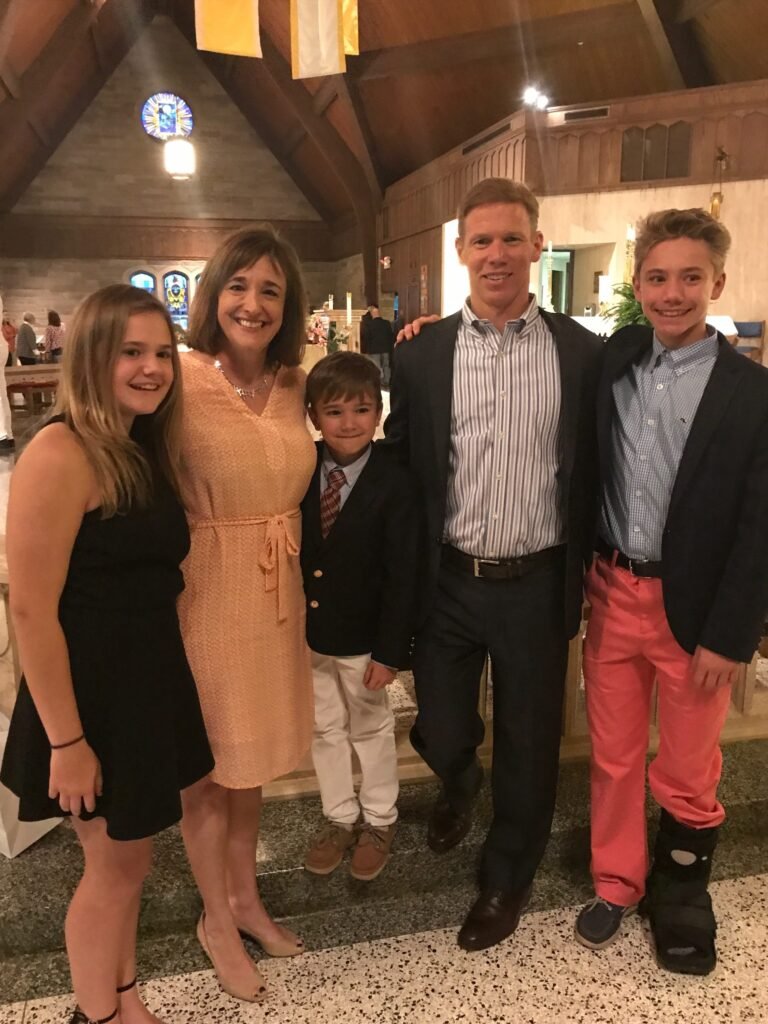


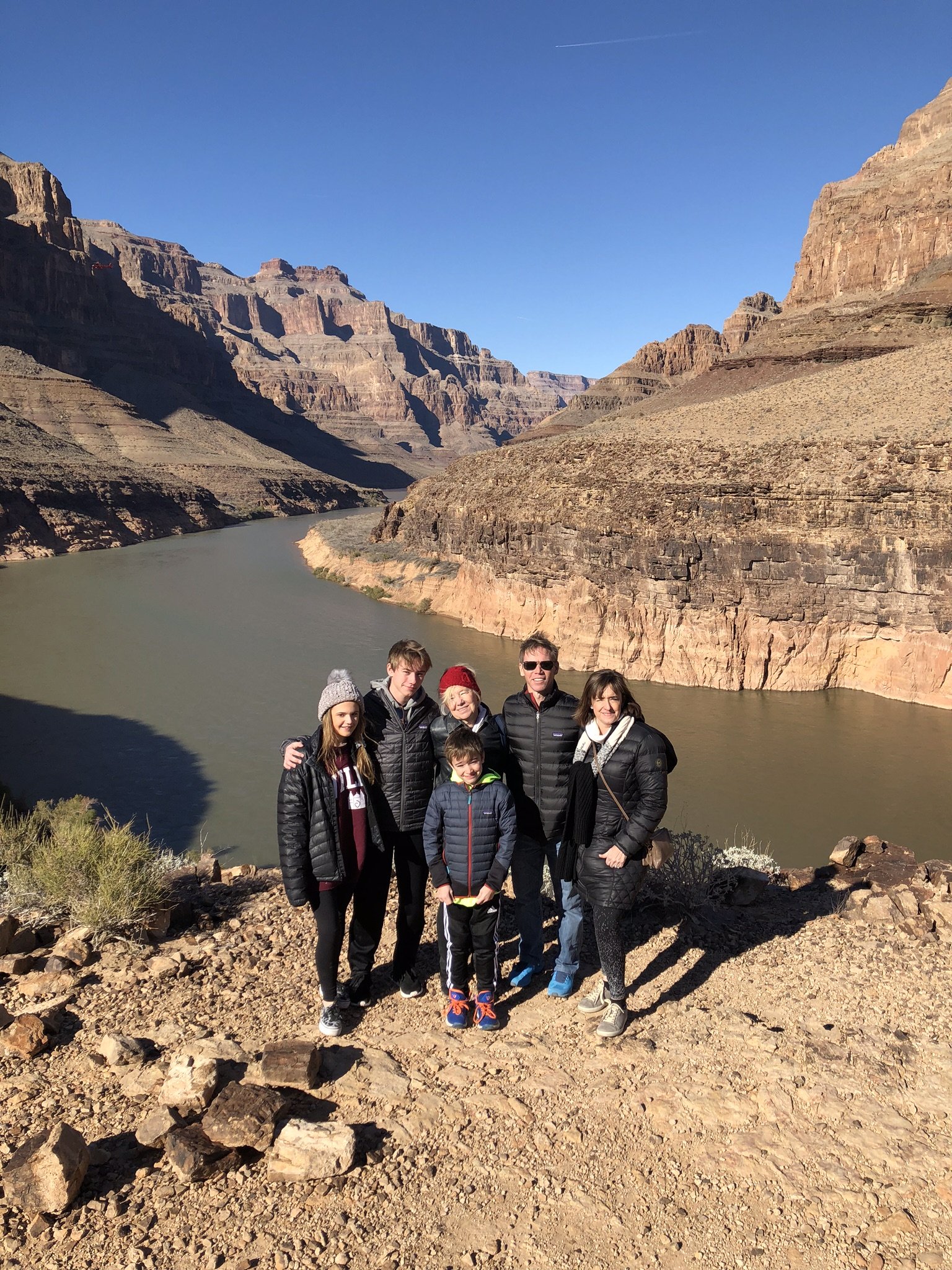


 Jazz Age JosephineWritten by Jonah WinterIllustrated by Marjorie PricemanThe story of St. Louis native Josephine Baker is beautifully portrayed in Jazz Age Josephine. Here we follow Josephine on her journey from poverty to stardom in Paris and all of that lay in between.
Jazz Age JosephineWritten by Jonah WinterIllustrated by Marjorie PricemanThe story of St. Louis native Josephine Baker is beautifully portrayed in Jazz Age Josephine. Here we follow Josephine on her journey from poverty to stardom in Paris and all of that lay in between. We MarchWritten and Illustrated by Shane W. EvansA beautiful book portraying one family’s participation in the March on Washington for Jobs and Freedom, this book is written for the youngest audiences. Children and adults alike will appreciate the artwork that graces the pages. The author writes, “It takes people of all ages and cultural backgrounds to move a nation into a new era of freedom. In a sense, these marches pushed old ideas out of the way and moved new ideas forward.”
We MarchWritten and Illustrated by Shane W. EvansA beautiful book portraying one family’s participation in the March on Washington for Jobs and Freedom, this book is written for the youngest audiences. Children and adults alike will appreciate the artwork that graces the pages. The author writes, “It takes people of all ages and cultural backgrounds to move a nation into a new era of freedom. In a sense, these marches pushed old ideas out of the way and moved new ideas forward.” Brick by BrickWritten by Charles R. Smith Jr.Illustrated by Floyd CooperThis tells the story of the roles slaves had in building the original White House. Through telling this story, Brick by Brick offers truth and a holistic approach to history that is so often missing. This is well worth reading and discussing with our children.
Brick by BrickWritten by Charles R. Smith Jr.Illustrated by Floyd CooperThis tells the story of the roles slaves had in building the original White House. Through telling this story, Brick by Brick offers truth and a holistic approach to history that is so often missing. This is well worth reading and discussing with our children.  Follow the Drinking GourdStories and Pictures by Jeanette WinterThis book tells the story of Underground Railroad conductor Peg Leg Joe who hired himself out to plantation owners. He taught the slaves he worked alongside the folk song “Follow the Drinking Gourd,” the lyrics of which were laced with information for escaping to Canada. This is a book my children pick up over and over at the library.
Follow the Drinking GourdStories and Pictures by Jeanette WinterThis book tells the story of Underground Railroad conductor Peg Leg Joe who hired himself out to plantation owners. He taught the slaves he worked alongside the folk song “Follow the Drinking Gourd,” the lyrics of which were laced with information for escaping to Canada. This is a book my children pick up over and over at the library. Juneteenth for MazieWritten and Illustrated by Floyd CooperMore than two years after the Emancipation Proclamation, news of the end of the Civil War and slavery was announced in Galveston, Texas. Juneteenth celebrates this announcement, and this book beautifully tells the story of its celebration and importance generations later.
Juneteenth for MazieWritten and Illustrated by Floyd CooperMore than two years after the Emancipation Proclamation, news of the end of the Civil War and slavery was announced in Galveston, Texas. Juneteenth celebrates this announcement, and this book beautifully tells the story of its celebration and importance generations later. My Story, My Dance: Robert Battle’s Journey to Alvin AileyWritten by Lesa Cline-RansomeIllustrated by James E. RansomeIn the foreword, Robert Battle writes, “Dance is a metaphor for how we get through life. It’s about timing, it’s about daring, it’s about grace, it’s about intensity, it’s about overcoming difficult steps – but then, finally, it’s about finding joy.” This book is geared toward elementary children, offers inspiration and indeed tells a story of finding joy.Another point to consider when choosing books to share with your children is the preponderance of fiction featuring white characters. Regardless of your family background, you can make a conscious choice to offer your children a diversity of characters and perspectives. This includes seeking out stories of nonwhite characters having experiences unrelated to their race or ethnicity.
My Story, My Dance: Robert Battle’s Journey to Alvin AileyWritten by Lesa Cline-RansomeIllustrated by James E. RansomeIn the foreword, Robert Battle writes, “Dance is a metaphor for how we get through life. It’s about timing, it’s about daring, it’s about grace, it’s about intensity, it’s about overcoming difficult steps – but then, finally, it’s about finding joy.” This book is geared toward elementary children, offers inspiration and indeed tells a story of finding joy.Another point to consider when choosing books to share with your children is the preponderance of fiction featuring white characters. Regardless of your family background, you can make a conscious choice to offer your children a diversity of characters and perspectives. This includes seeking out stories of nonwhite characters having experiences unrelated to their race or ethnicity. Marvelous Cornelius: Hurricane Katrina and the Spirit of New Orleans Written by Phil BildnerIllustrated by John ParraA favorite in our house, this book about clean-up efforts post-Katrina is based on the work of a sanitation worker and tells the story of a city coming together. The author notes, “Cornelius symbolizes what the city of New Orleans is all about – the energy, the spirit, the magic, the people. That’s what brought all those volunteers to the Crescent City, and inside each one was a little bit of Marvelous Cornelius.”
Marvelous Cornelius: Hurricane Katrina and the Spirit of New Orleans Written by Phil BildnerIllustrated by John ParraA favorite in our house, this book about clean-up efforts post-Katrina is based on the work of a sanitation worker and tells the story of a city coming together. The author notes, “Cornelius symbolizes what the city of New Orleans is all about – the energy, the spirit, the magic, the people. That’s what brought all those volunteers to the Crescent City, and inside each one was a little bit of Marvelous Cornelius.” The Zoey and Sassafras SeriesWritten by Asia CitroIllustrated by Marion LindsayGreat for reading aloud or for independent reading, each book in this series features a magical animal. The scientific method features prominently in the books as Zoey does experiments and research.
The Zoey and Sassafras SeriesWritten by Asia CitroIllustrated by Marion LindsayGreat for reading aloud or for independent reading, each book in this series features a magical animal. The scientific method features prominently in the books as Zoey does experiments and research. Last Stop on Market StreetWritten by Matt de la PeñaIllustrated by Christian RobinsonThis book captures the journey a young boy and his grandmother take on a Sunday morning. The story is full of the questions of childhood, "Why don't we have that?" "Why do we do this?" The grandmother has beautiful answers to each of her grandson's questions - answers we all may aspire to be able to give the children in our lives.
Last Stop on Market StreetWritten by Matt de la PeñaIllustrated by Christian RobinsonThis book captures the journey a young boy and his grandmother take on a Sunday morning. The story is full of the questions of childhood, "Why don't we have that?" "Why do we do this?" The grandmother has beautiful answers to each of her grandson's questions - answers we all may aspire to be able to give the children in our lives.














 Reading to your children is wonderful. Please keep doing it. If you're not already in the habit of reading to your child every day, start the habit now! Bedtime is the classic time but for those children who wake extra early, morning reading can be a great way to enter the day. Any time that works for you family is a good time.
Reading to your children is wonderful. Please keep doing it. If you're not already in the habit of reading to your child every day, start the habit now! Bedtime is the classic time but for those children who wake extra early, morning reading can be a great way to enter the day. Any time that works for you family is a good time.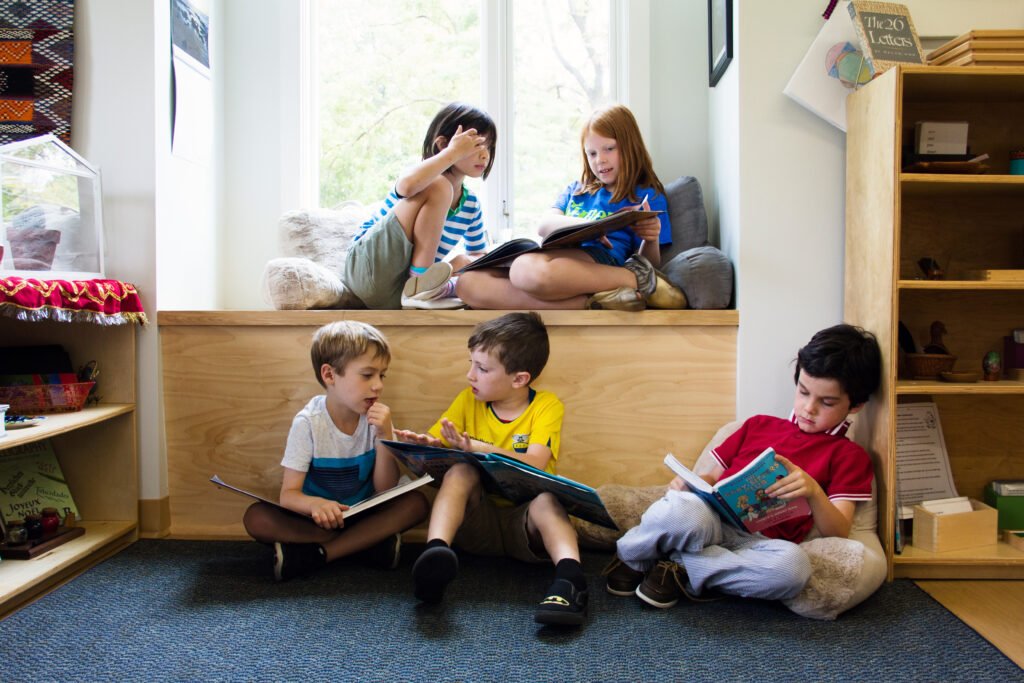 Another powerful way to foster a love of reading in your child is to simply read yourself. Pick up a book and read - to yourself, by yourself - and let them see you doing it. Children emulate what we do. They learn how to navigate the world from us. So, if you want reading to be part of their lives, make it a part of your life in such a way that they can see it.
Another powerful way to foster a love of reading in your child is to simply read yourself. Pick up a book and read - to yourself, by yourself - and let them see you doing it. Children emulate what we do. They learn how to navigate the world from us. So, if you want reading to be part of their lives, make it a part of your life in such a way that they can see it.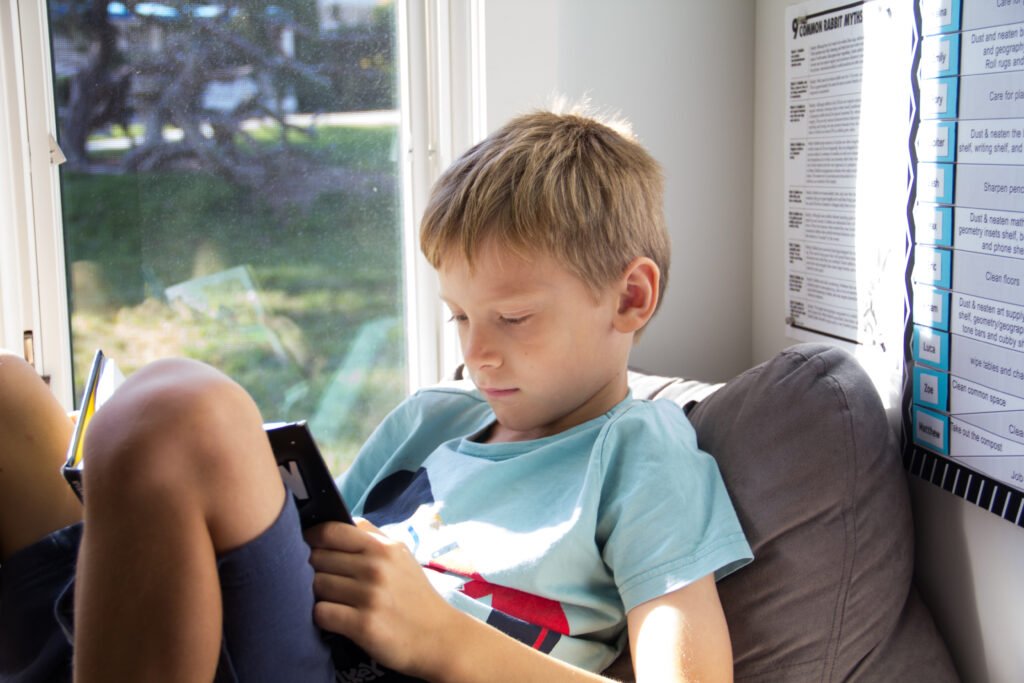 Many adults read at night before bed, and as relaxing as this may be for us, our children do not typically observe this part of our day. So, yes this is your excuse to let the dishes sit in the sink and read. Show your children the magic of being caught in a book so good that you can't put it down. When you're sitting in line at dismissal pick up your book instead of your phone. Make regular trips with your children to the library and make sure they know that at some point it's your turn to look through the stacks for books or pick up the books you've requested. Read. Just like they will want to play on your phone if they see you on your phone... they will also want to know the magic of books if they see that it's a part of your life. Let reading permeate the culture of your family.
Many adults read at night before bed, and as relaxing as this may be for us, our children do not typically observe this part of our day. So, yes this is your excuse to let the dishes sit in the sink and read. Show your children the magic of being caught in a book so good that you can't put it down. When you're sitting in line at dismissal pick up your book instead of your phone. Make regular trips with your children to the library and make sure they know that at some point it's your turn to look through the stacks for books or pick up the books you've requested. Read. Just like they will want to play on your phone if they see you on your phone... they will also want to know the magic of books if they see that it's a part of your life. Let reading permeate the culture of your family.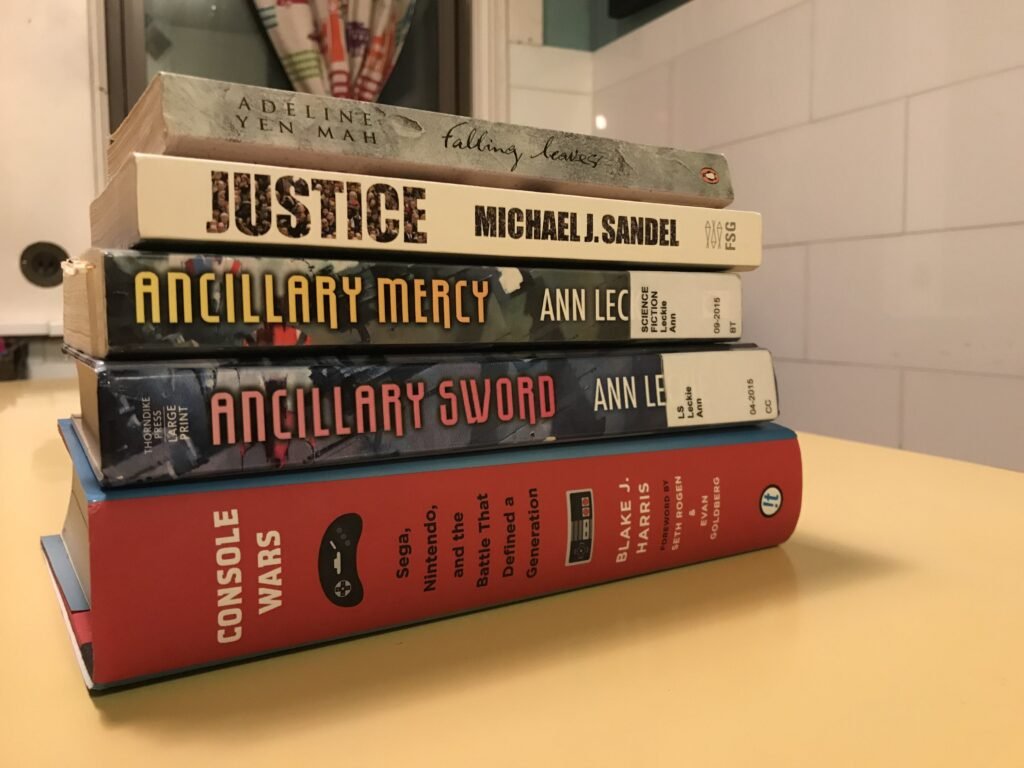 Thank you Melinda for all your mad photo taking skills.
Thank you Melinda for all your mad photo taking skills.










